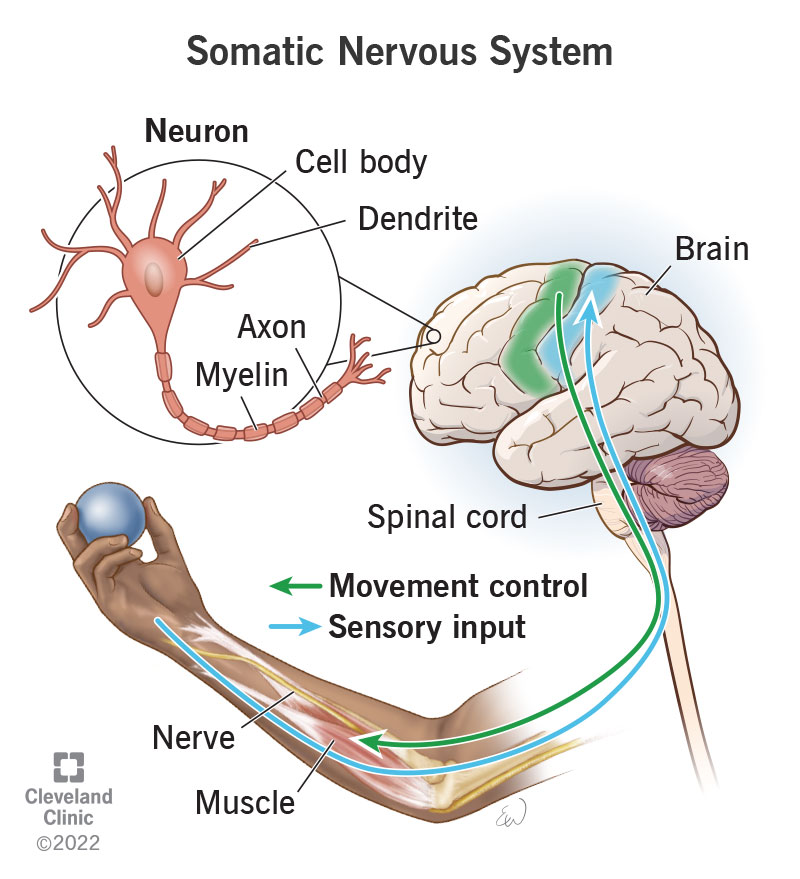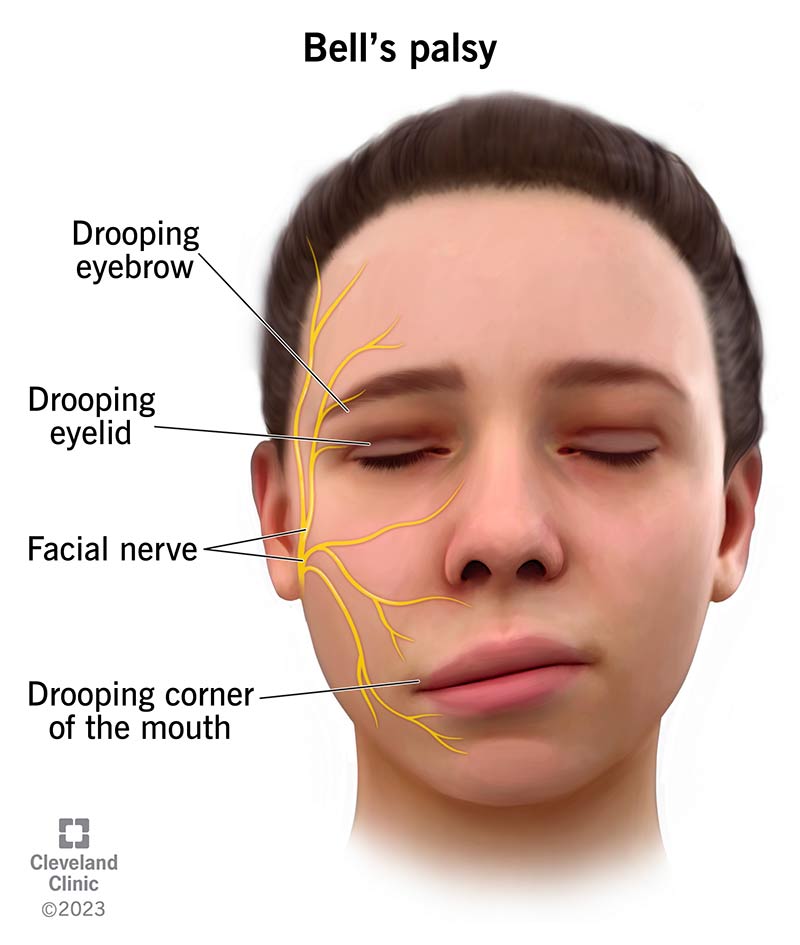Cranial Nerves and Their Foramina
Cranial Nerves and Their Foramina
The cranial nerves are essential for various functions, including motor and sensory activities throughout the head and neck. Here is an overview of the cranial nerves, their associated foramina, and their functional components.
Cranial Nerves and Their Foramina:
- Olfactory (CN I): Cribriform Plate

- Optic (CN II): Optic Canal

- Oculomotor (CN III): Superior Orbital Fissure

- Trochlear (CN IV): Superior Orbital Fissure
- Trigeminal (Ophthalmic - CN V1): Superior Orbital Fissure
- Trigeminal (Maxillary - CN V2): Foramen Rotundum
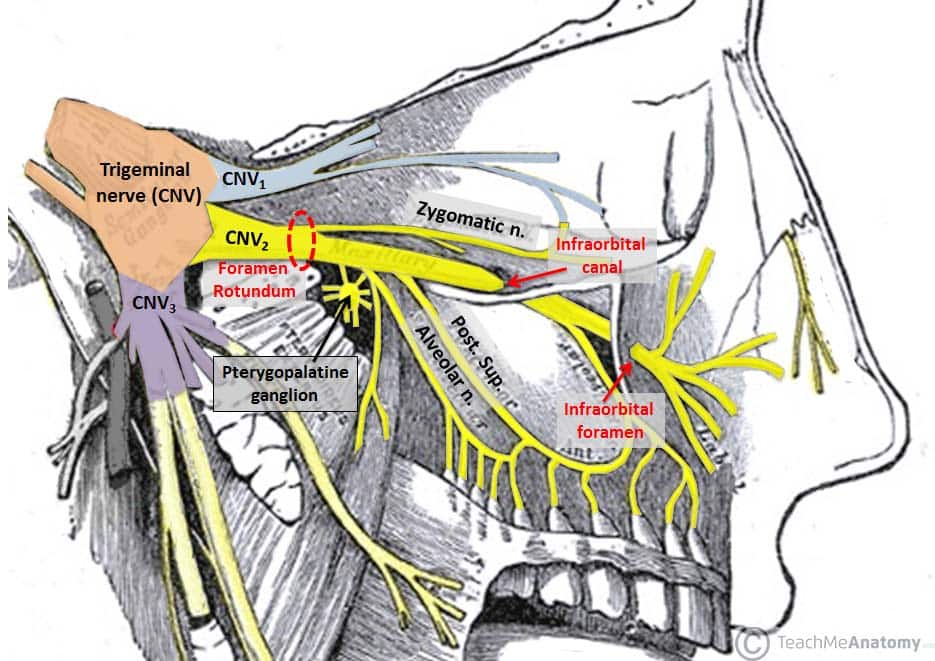
- Trigeminal (Mandibular - CN V3): Foramen Ovale
- Abducens (CN VI): Superior Orbital Fissure
- Facial (CN VII): Internal Acoustic Meatus
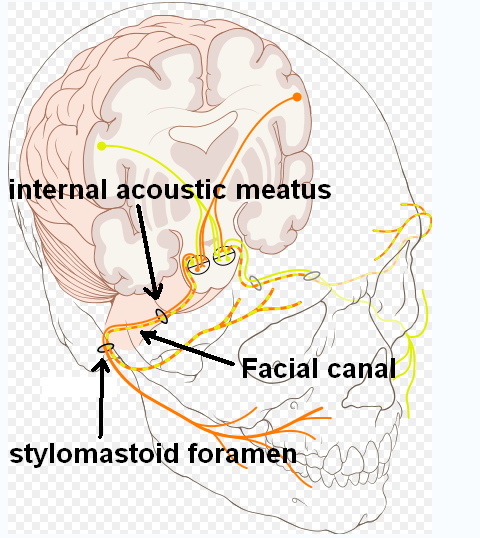
- Vestibulocochlear (CN VIII): Internal Acoustic Meatus
- Glossopharyngeal (CN IX): Jugular Foramen
- Vagus (CN X): Jugular Foramen

- Accessory (CN XI): Jugular Foramen
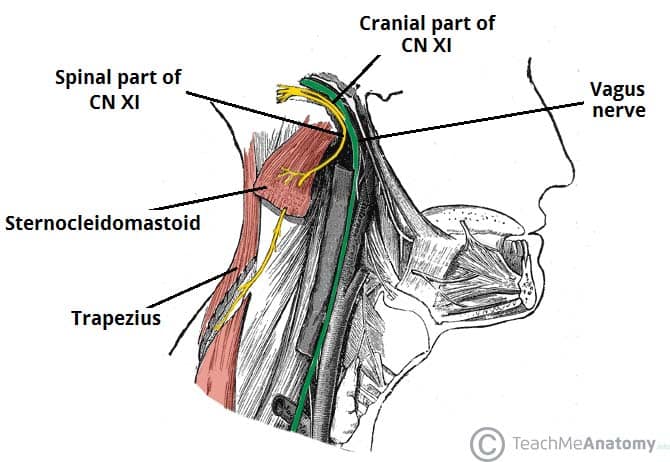
- Hypoglossal (CN XII): Hypoglossal Canal
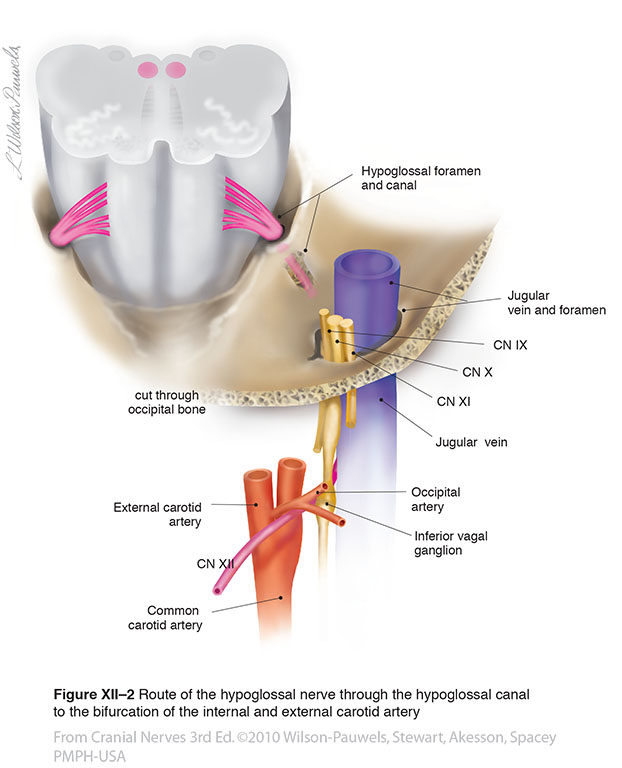
Functional Components of Cranial Nerves:
- General Sensory (GSA - General Somatic Afferents): Nerve fibers that carry sensory information from the skin.
- Visceral Sensory (GVA - General Visceral Afferents): Nerve fibers that carry pain and stretch sensations from organs, often registered as referred pain.
- Special Sensory (SA - Special Afferents): Nerve fibers that convey sensory information about the senses of smell, taste, sight, hearing, and balance.
- Somatic Motor (GSE - General Somatic Efferent): Nerve fibers that convey motor information to skeletal muscles.
- Branchial Efferent (SVE/BE - Special Visceral Efferent): Nerve fibers which innervate structures derived from pharyngeal arches rather than somites, as in the rest of the body.
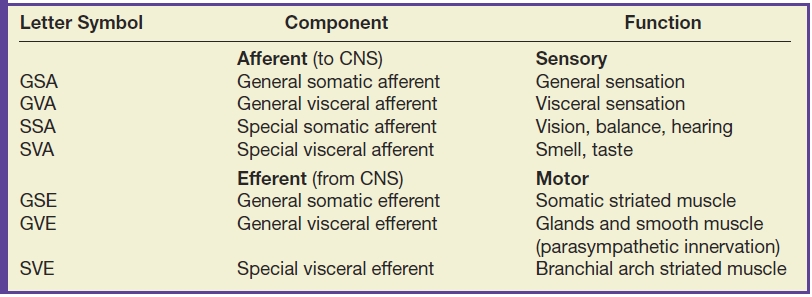
- Visceral Motor (GVE - General Visceral Efferent): Nerve fibers that carry parasympathetic information to smooth muscle, glands, and cardiac muscle.

Each cranial nerve may have one or more of these functional components. For example, CN VII (Facial Nerve) has four components: motor to skeletal muscle, visceral motor (parasympathetic), somatic sensory, and special sensory.
Detailed Overview of Selected Cranial Nerves:
Cranial Nerve I - Olfactory Nerve:
* Entirely special sensory (sense of smell). :max_bytes(150000):strip_icc()/olfaction-57966b3f3df78ceb863e0683.jpg) * Multiple nerves pass through the cribriform plate of the ethmoid bone.
* Olfactory mucosa is located in the superior part of the nasal cavity (lateral wall and nasal septum).
* Fractures of the cribriform plate can result in anosmia (loss of smell) and/or clear nasal discharge (CSF leakage = rhinorrhea).
* Multiple nerves pass through the cribriform plate of the ethmoid bone.
* Olfactory mucosa is located in the superior part of the nasal cavity (lateral wall and nasal septum).
* Fractures of the cribriform plate can result in anosmia (loss of smell) and/or clear nasal discharge (CSF leakage = rhinorrhea).
Cranial Nerve II - Optic Nerve:
* Entirely special sensory (vision).  * Enters the cranial cavity through the optic canal.
* The optic nerve is covered by meninges (dura mater, arachnoid mater, and pia mater), and the ophthalmic artery courses with it through the optic canal.
* It contains the central artery of the retina (a branch of the ophthalmic artery) and the central vein of the retina.
* Increased intracranial pressure can cause swelling of the optic nerve (papilledema).
* Enters the cranial cavity through the optic canal.
* The optic nerve is covered by meninges (dura mater, arachnoid mater, and pia mater), and the ophthalmic artery courses with it through the optic canal.
* It contains the central artery of the retina (a branch of the ophthalmic artery) and the central vein of the retina.
* Increased intracranial pressure can cause swelling of the optic nerve (papilledema). 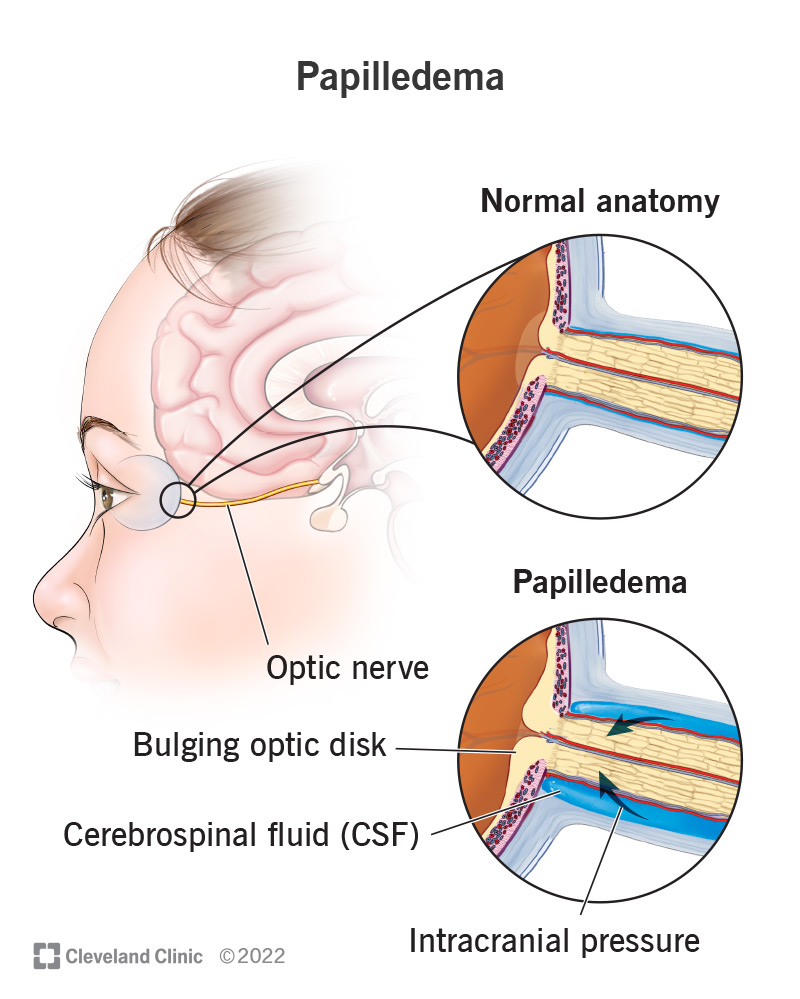
Cranial Nerve III - Oculomotor Nerve:
* Provides motor innervation to five voluntary muscles in the orbit: superior, inferior, and medial rectus, inferior oblique, and levator palpebrae superioris. 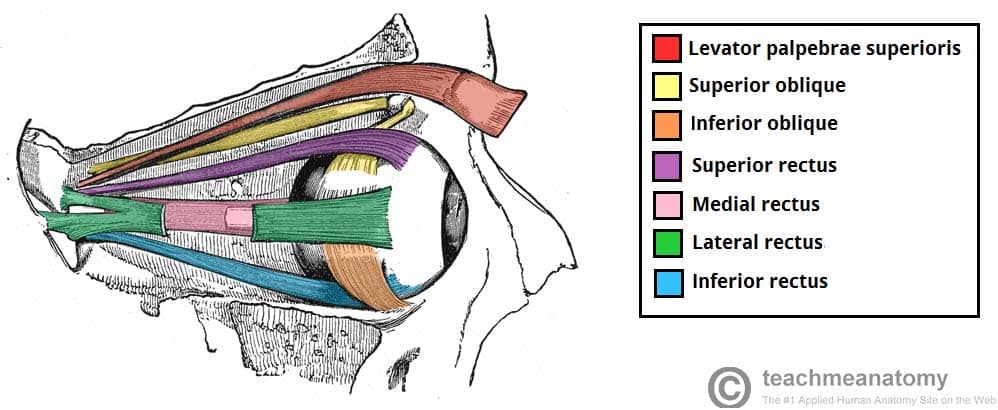 * Parasympathetic motor to two smooth muscles of the eye: ciliary muscle and sphincter pupillae muscles.
* Courses in the lateral wall of the cavernous sinus and enters the orbit through the superior orbital fissure.
* A lesion of CN III can cause "3rd nerve palsy," resulting in an eyeball that is "down and out," ptosis, and a dilated pupil with lack of accommodation.
* Parasympathetic motor to two smooth muscles of the eye: ciliary muscle and sphincter pupillae muscles.
* Courses in the lateral wall of the cavernous sinus and enters the orbit through the superior orbital fissure.
* A lesion of CN III can cause "3rd nerve palsy," resulting in an eyeball that is "down and out," ptosis, and a dilated pupil with lack of accommodation. 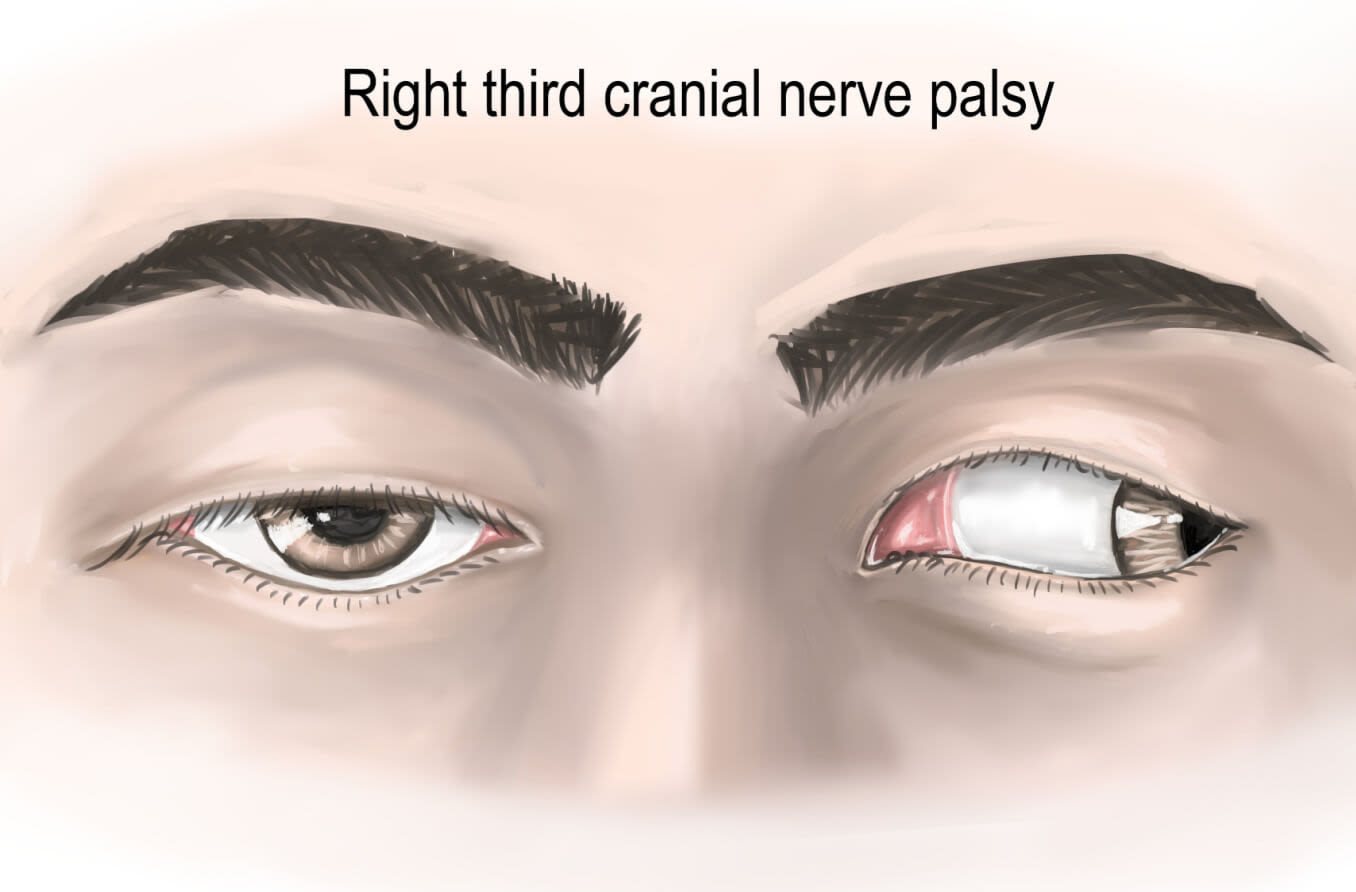
Cranial Nerve IV - Trochlear Nerve:
* Provides motor innervation to one extraocular muscle: superior oblique muscle (SO4).  * Courses in the lateral wall of the cavernous sinus and enters the orbit through the superior orbital fissure.
* Courses in the lateral wall of the cavernous sinus and enters the orbit through the superior orbital fissure.
Cranial Nerve V - Trigeminal Nerve:
* The major general sensory nerve of the head with three divisions:
* Ophthalmic (V1): Passes through the superior orbital fissure.  * Maxillary (V2): Passes through the foramen rotundum.
* Maxillary (V2): Passes through the foramen rotundum.  * Mandibular (V3): Passes through the foramen ovale.
* The motor root of the mandibular division innervates eight muscles, including the mastication muscles and some tensor muscles.
* Mandibular (V3): Passes through the foramen ovale.
* The motor root of the mandibular division innervates eight muscles, including the mastication muscles and some tensor muscles. 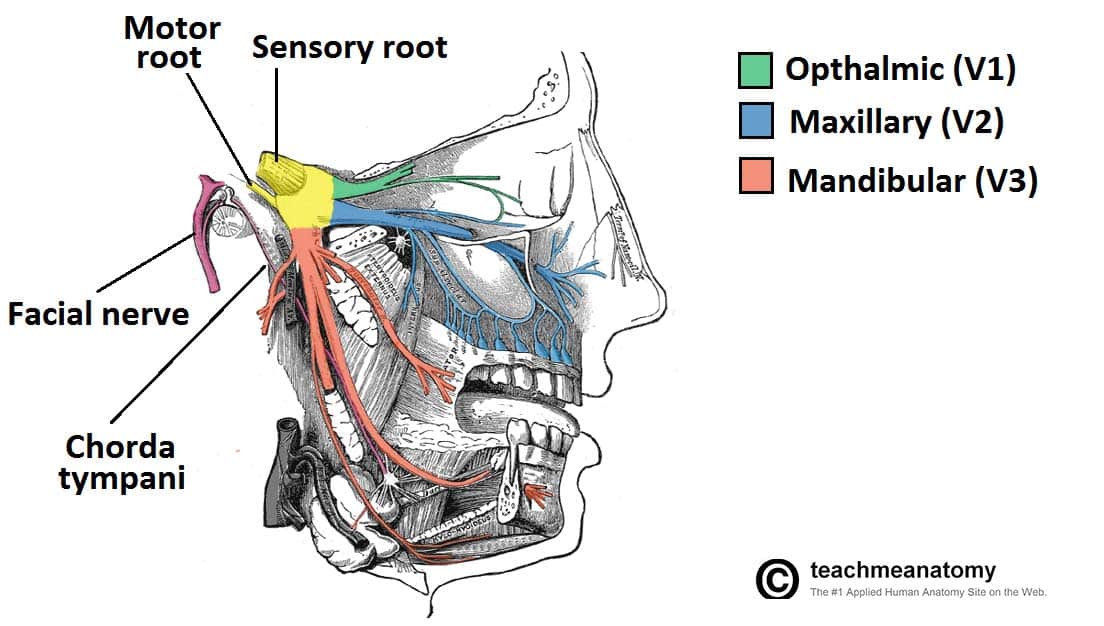
Cranial Nerve VI - Abducent Nerve:
* Provides motor innervation to the lateral rectus muscle (LR6), which abducts the pupil (turns it laterally). 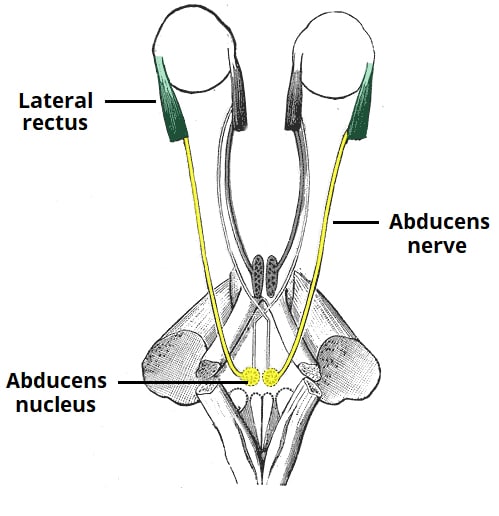 * Lesion of CN VI results in the pupil pointing inward (adducted) because the medial rectus muscle (innervated by CN III) is unopposed.
* Courses through the lumen of the cavernous sinus and enters the orbit through the superior orbital fissure.
* Lesion of CN VI results in the pupil pointing inward (adducted) because the medial rectus muscle (innervated by CN III) is unopposed.
* Courses through the lumen of the cavernous sinus and enters the orbit through the superior orbital fissure.
Cranial Nerve VII - Facial Nerve:
* Motor root exits the stylomastoid foramen to innervate facial muscles.  * Provides motor innervation to the stylohyoid muscle, posterior belly of the digastric muscle, muscles of facial expression, and the stapedius muscle in the middle ear.
* The chorda tympani enters the infratemporal fossa to join the lingual nerve and provides taste to the anterior 2/3 of the tongue.
* Provides motor innervation to the stylohyoid muscle, posterior belly of the digastric muscle, muscles of facial expression, and the stapedius muscle in the middle ear.
* The chorda tympani enters the infratemporal fossa to join the lingual nerve and provides taste to the anterior 2/3 of the tongue.  * Parasympathetic functions include secretomotor to all glands of the head except for the parotid gland.
* Bell's palsy can result in facial nerve paralysis/weakness, usually due to inflammation or compression near the stylomastoid foramen.
* Parasympathetic functions include secretomotor to all glands of the head except for the parotid gland.
* Bell's palsy can result in facial nerve paralysis/weakness, usually due to inflammation or compression near the stylomastoid foramen.
Cranial Nerve VIII - Vestibulocochlear Nerve:
* A special sensory nerve associated with hearing and balance. 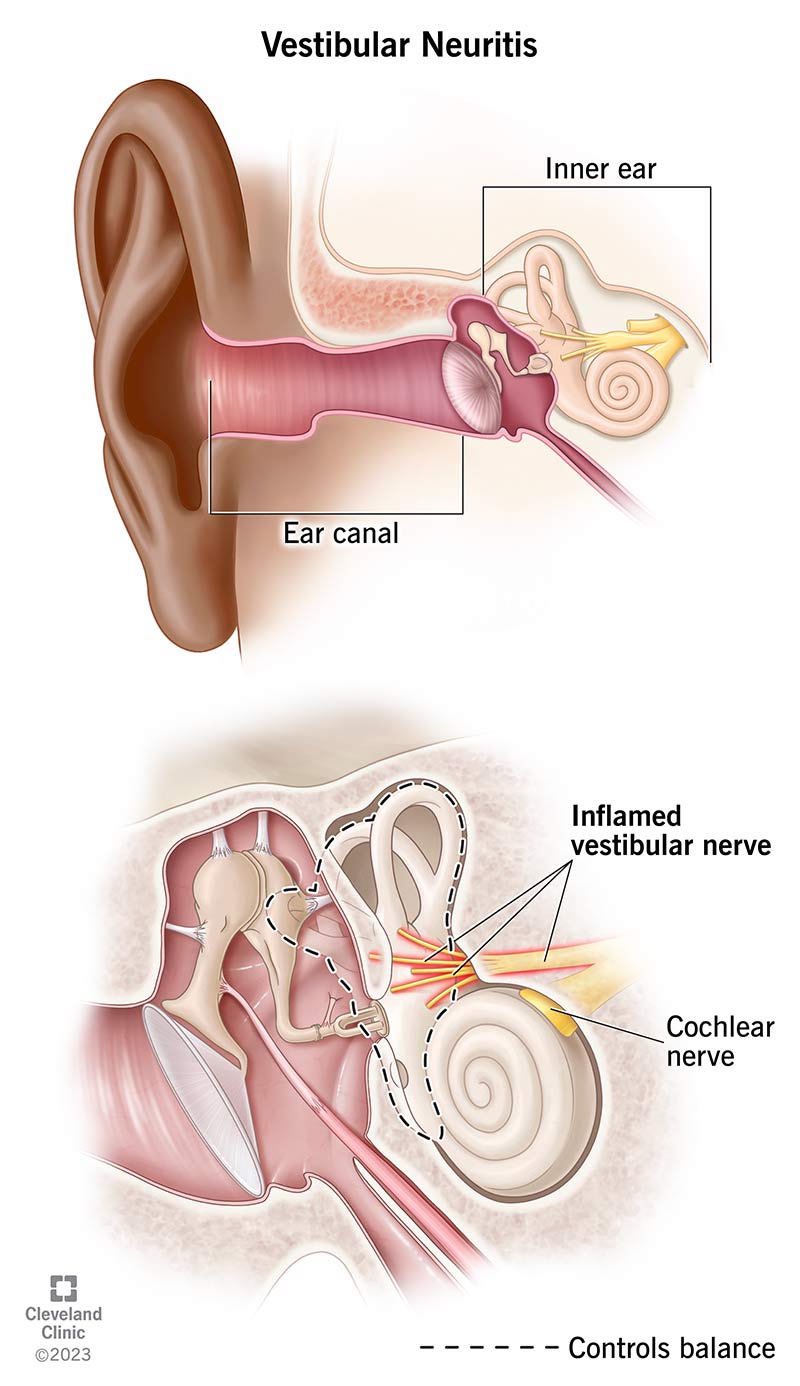

Cranial Nerve IX - Glossopharyngeal Nerve:
* Passes through the jugular foramen and courses along the lateral edge of the stylopharyngeus muscle. 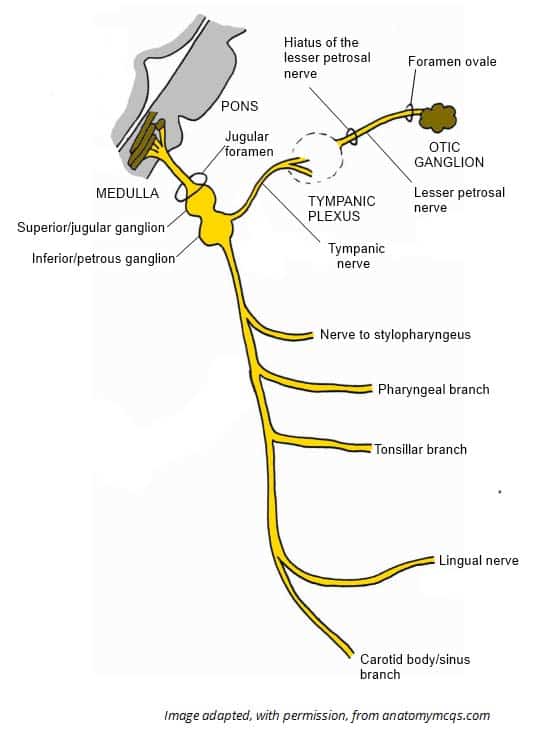 * Provides general sensory innervation to the oropharynx, palatine tonsil, posterior 1/3 of the tongue, auditory tube, and middle ear.
* Visceral sensory axons come from the carotid sinus and body, and special sensory axons provide taste to the posterior 1/3 of the tongue.
* Motor innervation is provided to the stylopharyngeus muscle, and parasympathetic innervation to the parotid gland via the otic ganglion.
* Provides general sensory innervation to the oropharynx, palatine tonsil, posterior 1/3 of the tongue, auditory tube, and middle ear.
* Visceral sensory axons come from the carotid sinus and body, and special sensory axons provide taste to the posterior 1/3 of the tongue.
* Motor innervation is provided to the stylopharyngeus muscle, and parasympathetic innervation to the parotid gland via the otic ganglion. 
Cranial Nerve X - Vagus Nerve:
* Passes through the jugular foramen and courses in the carotid sheath in the neck and thorax.  * Provides sensory innervation to the mucosa of the larynx and a small part of the external acoustic meatus.
* Provides motor innervation to pharyngeal constrictors, palatal muscles (except tensor veli palatini), and intrinsic laryngeal muscles.
* Provides sensory innervation to the mucosa of the larynx and a small part of the external acoustic meatus.
* Provides motor innervation to pharyngeal constrictors, palatal muscles (except tensor veli palatini), and intrinsic laryngeal muscles.
